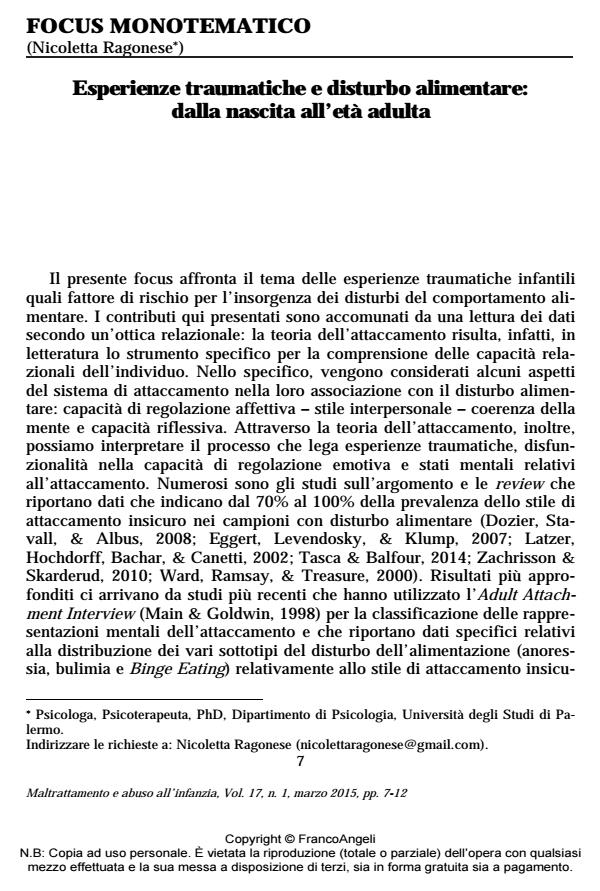Esperienze traumatiche e disturbo alimentare: dalla nascita all’età adulta
Titolo Rivista MALTRATTAMENTO E ABUSO ALL’INFANZIA
Autori/Curatori Nicoletta Ragonese
Anno di pubblicazione 2015 Fascicolo 2015/1
Lingua Italiano Numero pagine 6 P. 7-12 Dimensione file 36 KB
DOI 10.3280/MAL2015-001001
Il DOI è il codice a barre della proprietà intellettuale: per saperne di più
clicca qui
Qui sotto puoi vedere in anteprima la prima pagina di questo articolo.
Se questo articolo ti interessa, lo puoi acquistare (e scaricare in formato pdf) seguendo le facili indicazioni per acquistare il download credit. Acquista Download Credits per scaricare questo Articolo in formato PDF

FrancoAngeli è membro della Publishers International Linking Association, Inc (PILA)associazione indipendente e non profit per facilitare (attraverso i servizi tecnologici implementati da CrossRef.org) l’accesso degli studiosi ai contenuti digitali nelle pubblicazioni professionali e scientifiche
- Disregolazione affettiva, disorganizzazione dell'attaccamento e disturbi alimentari: fattori di rischio individuali e familiari Valentina Guiducci, Fabiola Bizzi, Antonio Ferro, Donatella Cavanna, in MALTRATTAMENTO E ABUSO ALL'INFANZIA 2/2018 pp.65
DOI: 10.3280/MAL2018-002005
Nicoletta Ragonese, Esperienze traumatiche e disturbo alimentare: dalla nascita all’età adulta in "MALTRATTAMENTO E ABUSO ALL’INFANZIA" 1/2015, pp 7-12, DOI: 10.3280/MAL2015-001001